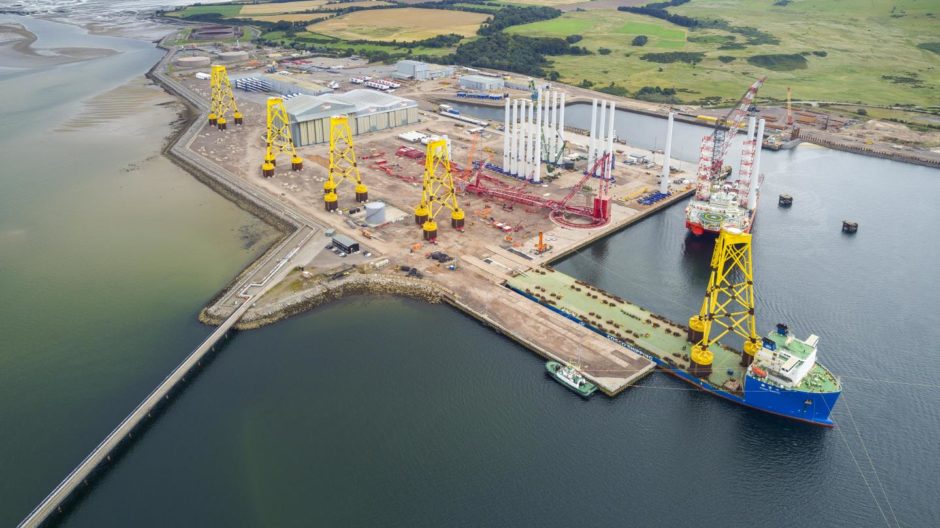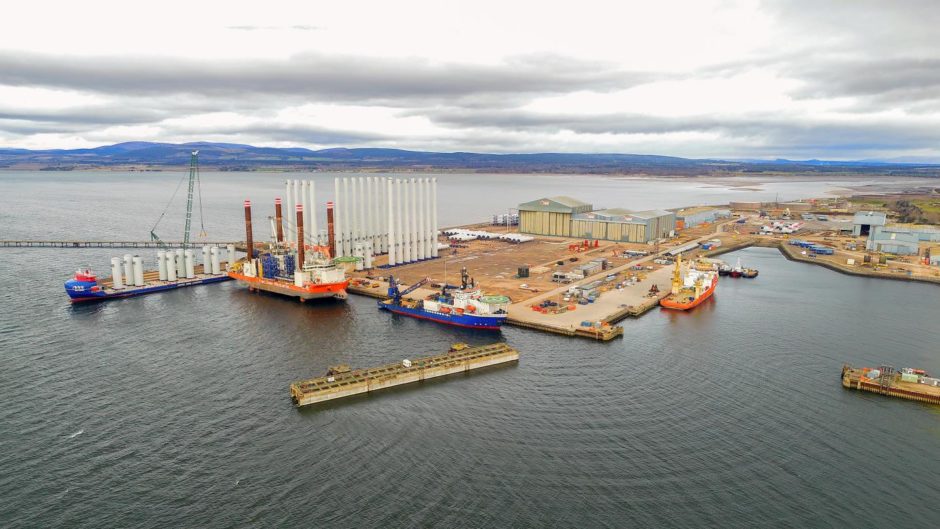
Global Energy Group has teamed up with the world’s second largest producer of methanol as it seeks to develop a low carbon cluster in Cromarty Firth.
The company has entered into an agreement with Swiss-based integrated energy company Proman to develop a renewable power to methanol plant at the Nigg Oil Terminal in the Highlands.
Under the current designs, the facility would use local sources of captured carbon dioxide to make the fuel.
Dubbed the “Cromarty Clean Fuels Project”, the initiative is subject to the successful completion of ongoing financial and technical feasibility studies, as well as further development and financing.
If it’s given the go ahead, Proman will become the owner, operator and offtaker of the green methanol production facility.
This latest announcement forms part of plans by GEG to strengthen the “resilience and competitiveness” of the Highlands by establishing an industrial low carbon cluster at Port of Nigg.
It is hoped the move will increase local productivity, stimulate innovative partnerships and attract significant inward investment.
By developing “essential” supply chain infrastructure, GEG can also help the Scottish and UK Governments to hit their net zero targets of 2045 and 2050 respectively.
Tim Cornelius, chief executive of Global Energy Group, said: “We are delighted to be joining forces with Proman on this potentially seminal project for Scotland.
“Green methanol can be made from many plentiful sources and with the efforts being made to capture North Sea carbon dioxide, we hope to become an important customer and consumer of projects such as the Acorn Project to produce clean fuels for the wider maritime transport sector.
“Onshore and offshore wind is one of the world’s fastest growing sources of energy, however, wind power must be dispatched as soon as it is produced, even if there is not enough demand for electricity.
“When this happens, operators have little choice but to disconnect the renewable source from the grid, leading to wasted energy and costs for governments and operators.
“This plant will have the capability of harnessing excess power to producegreen methanol, which can then be used as an automotive or shipping fuel or as a chemical building block in thousands of everyday products.“
Energy Voice previously reported that GEG was exploring the possibility of developing a “huge” power-to-x plant at Port of Nigg, as a means of using the green energy produced nearby.
Such a facility would convert renewable energy into carbon neutral fuels, such as hydrogen, ammonia and methanol.
Green methanol can be used used as a transportation fuel or as a feedstock in the chemical industry.
It is produced from recycled carbon dioxide and green hydrogen, which is made using renewable electricity through a process called electrolysis.
By eliminating sulphur oxide and particulate matter, as well as significantly reducing nitrogen oxide and carbon dioxide emissions, green methanol can “drastically” cut greenhouse gases.
The Cromarty Clean Fuels Project team is now assessing the commercial, technical and financial viability of a renewable power to methanol production and export facility.
That includes the ability to store onshore at Nigg and load methanol to be exported on bulk carrier vessels using the repurposed jetty at the site.
The feasibility study is also investigating how scale may impact the project, in order to determine the optimal size.
David Cassidy, CEO of Proman, commented: “As a global leader in methanol production we are actively investing and pursuing green methanol projects to further develop methanol’s potential as a clean fuel for the future.
“Working with Global Energy Group in establishing green methanol production in Scotland is an exciting development in our strategy as it combines the necessary requirements of low cost renewable energy and utilises local sources of captured CO2 to produce green methanol.
“The UK has proven itself as a world leader in supporting offshore wind, tidal and other clean power generation technologies. Green methanol presents a significant opportunity to bridge the gap from fossil-based to renewable fuels as we move to a lower carbon future and as such the production of and market for ‘green’ methanol from sustainable sources such as waste, bio-mass or renewable energy is growing and highly scalable.”
In addition to the Cromarty Clean Fuels Project, GEG is also working with ScottishPower to assess the feasibility of setting up green hydrogen generation facilities at Nigg.
The fuel could then be used in house to decarbonise operations at the site.
Moreover, hydrogen could be exported to other countries in Europe, although GEG previously said this hinges on Cromarty Firth securing greenport status.
Hydrogen use is expected to grow exponentially in the coming years as efforts to decarbonise industry and transportation ramp up.
Yesterday, the UK Government published its long awaited Hydrogen Strategy, in which it set out its ambitions for developing and growing a domestic hydrogen economy.
Recommended for you



 © Supplied by Global Energy Group
© Supplied by Global Energy Group